A pair of patent filings discovered on Thursday reveals Apple may be looking into the deployment of fiber optic systems for iOS devices, as the applications describe an advanced cable and docking system that mates with laser-equipped portable electronic devices.
Published by the U.S. Patent and Trademark Office, Apple's concurrently filed patent applications for "Optical connection of devices" and a "Hybrid optical connector" reveal an intricate array of connectors, adapters and devices that are able to transfer both electrical and optical signals through fiber optic cables.
Fiber optic designs are well known for their fast transmission speeds, but up to now the technology has yet to penetrate the consumer market due to manufacturing costs and compatibility, among other hurdles. On the other hand, the tried and true method of conductive electrical transfer is ubiquitous. Apple looks to implement the best of both worlds with its patent, joining the technologies in a compact, highly compatible solution.
At their most basic level, the two filings can be thought of as an advanced take on existing technology, which uses conductive metal pins and wires to transfer data. In conjunction with the usual conductive material, the invention runs two fiber optic cables, thereby creating a connector that can carry both electrical and optical signals simultaneously.
Male and female connectors.In addition to the benefits of being backwards compatbile with legacy devices through adapters, the use of electrical cabling can provide power, something fiber optic systems lack. The invention refers to this dual-mode system as being "electro-optical."
To operate, the patent calls for an electronic device to have such an electro-optical connector located at its base, the traditional spot for a dock connector. This connector can have any plurality of optical components with which to transmit and receive data. In one example, the system has two optical channels, one for transmission and one for reception, though a single part can be used for both duties. As noted by the filing, electrical signals are converted both into and out of optical signals on-device.
Exploded view of one connector embodiment.Once conversion is complete, the device can send out the optical signal over the transmission fiber channel using a laser or other optical transmitter.
The patent points out that the receiving lens is a parabolic concentrator that collects light to send to a photodiode on the device. This setup allows for larger diameter fibers of around 200 to 500 microns, which in turn provides larger tolerances for alignment. By comparison, the Thunderbolt protocol uses two 62.5-micron fibers.
Lens array and transmission components.There are a number of connectors described in the patent language, including components that implement springs to protect and align the optical components embedded within. These units range in design, with some calling for small male tongue inserts that can significant reduce housing size, thus allowing room for additional parts or a smaller device.
An alternative means of transferring data is the docking station, which itself can be used to substantially align the fiber optic cabling correctly with a docked portable. In some embodiments, the part can also serve as an inductive charging station.
Dock with hybrid connector.As with most Apple filings, it is unclear if the system will be implemented in future products. However, buried deep within the patent language is a description and accompanying illustration of what appears to be Apple's current Lightning connector, suggesting the invention is laying the groundwork for a successor technology.
Apple's hybrid optical connector patents were first filed for in 2010, with a continuation in 2012, and credit Jason S. Sloey, Albert J. Golko, Eric S. Jol and Ian Spraggsas as their inventors.
 Mikey Campbell
Mikey Campbell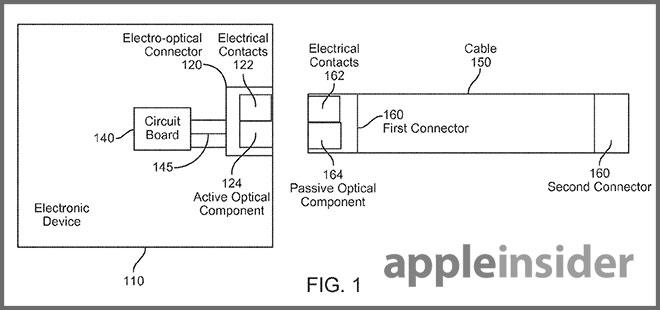
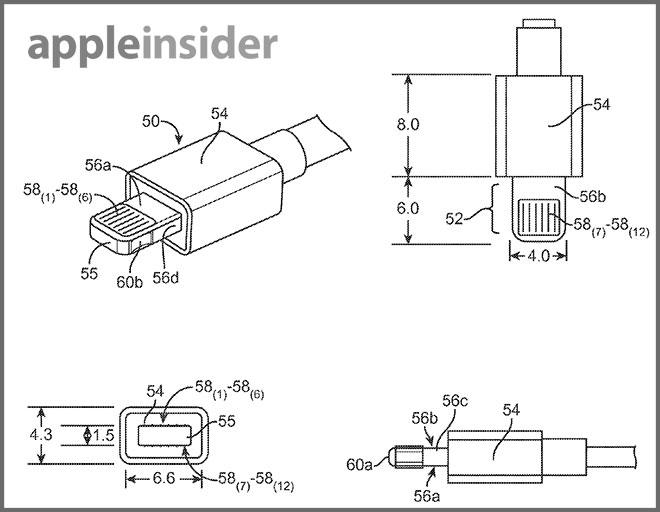


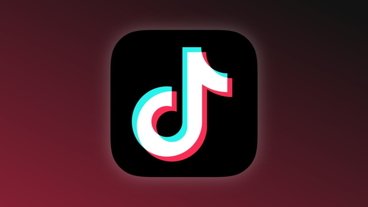
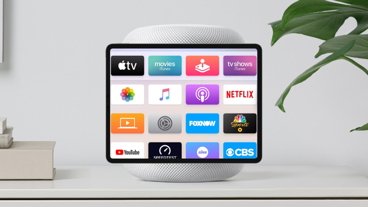


-m.jpg)





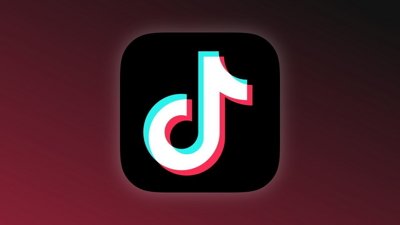
 Charles Martin
Charles Martin
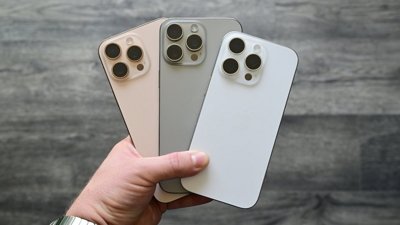
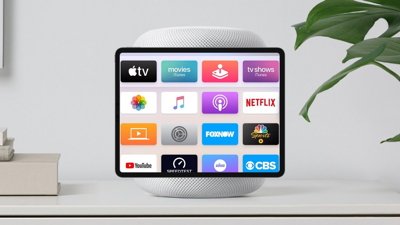
 Wesley Hilliard
Wesley Hilliard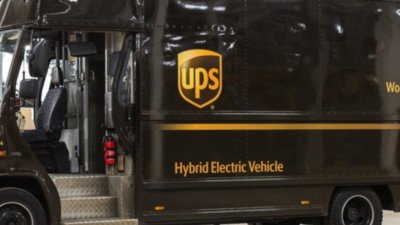
 Stephen Silver
Stephen Silver
 William Gallagher
William Gallagher

 Marko Zivkovic
Marko Zivkovic









34 Comments
For some reason sharks with frikki'n lasers on their heads entered my mind.
You know what incredible, awesome, advanced connector for iOS devices I'd like to see Apple 'research'? A frikkin' iPhone Dock.
Apple's new secret weapon to defeat Android - the $120 iPod cable.
[quote name="cnocbui" url="/t/156914/apple-researching-advanced-hybrid-fiber-optic-connectors-for-ios-devices#post_2308637"]Apple's new secret weapon to defeat Android - the $120 iPod cable. [/quote] Coming soon to the iPod Classic apparently. In all seriousness though, this looks awesome and expensive. But with each great new technology comes a great $49 price tag...
Not sure I see the point. I've never thought "OMG I wish my iDevice would sync 10 seconds quicker". Another connector on the iPhone would just bring the trolls out. I'm surprised at the lightning port really as it does have the same limits as the 30 pin dock connector, just smaller and bidirectional. Why they didn't go for a Magsafe connection with the connections available for the optical thunderbolt setup I'll never know.